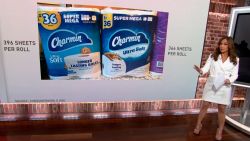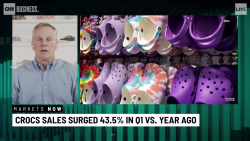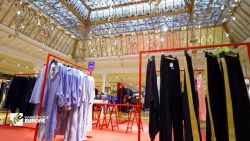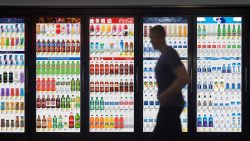Retail bankruptcies are piling up during the pandemic, and a record number of brick-and-mortar stores are expected to permanently close this year. But one discount furniture and home decor chain is cleaning up.
Big Lots (BIG), a retailer with more than 1,400 US stores, saw sales stagnate in recent years but experienced record sales growth during its most recent quarter, gaining market share from rivals. Its stock price has surged nearly 60% this year, making it one of the top stocks of 2020.
Big Lots’ no-frills stores with bright white and orange signs have a wide mix of merchandise — everything from mattresses, couches, lamps and kitchen appliances to toys, snacks, pet food and cleaning supplies. During the summers, stores feature patio furniture and gazebos, while Christmas trims and fireplaces are highlighted in the winter.
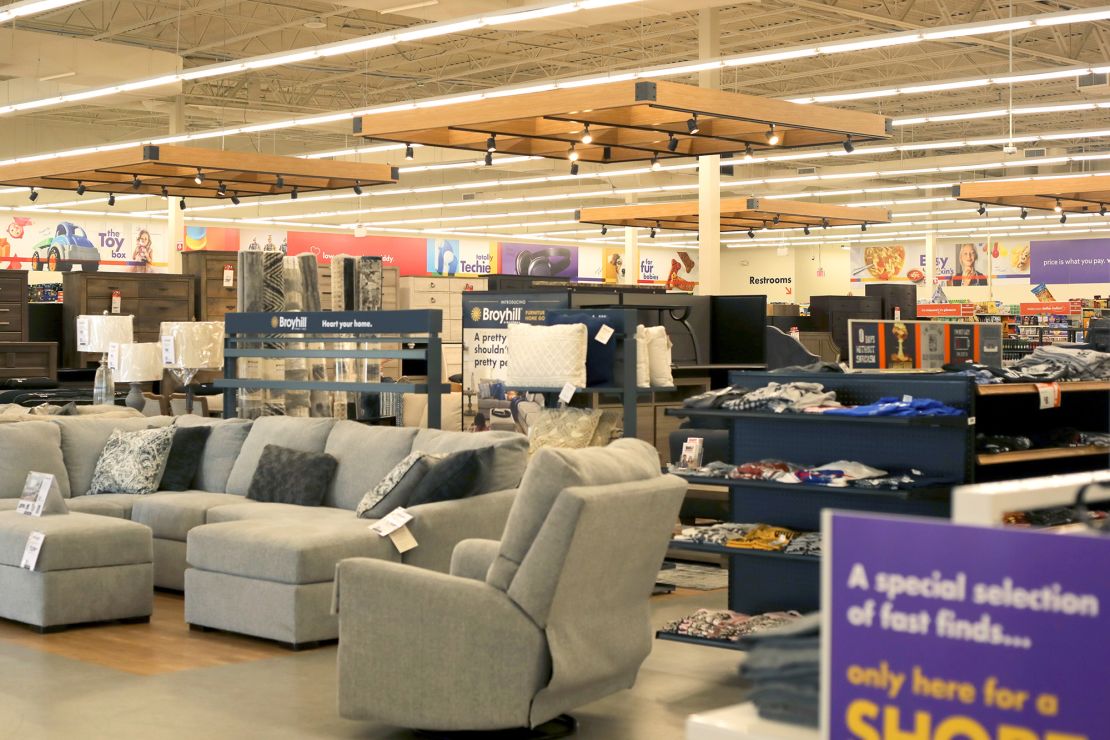
This broad range of items helps Big Lots distinguish itself from traditional home decor and furniture sellers, as well as grocers, analysts say. The company sells frozen foods in refrigerators at the end of aisles. Big Lots also offers closeout merchandise, which it scoops up from manufacturers when they produce too much of an item or discontinue a line.
At an average of 25,000 square feet, Big Lots stores are a little smaller than a typical supermarket. Most of its stores in 47 states are located in strip shopping centers, not enclosed malls, which industry analysts say is an advantage as many traditional malls lose foot traffic or close.
Big Lots is a “unique animal,” said Anthony Chukumba, analyst at Loop Capital Markets. “They’re kind of like a dollar store, but they are also really good at furniture.”
“Not many retailers have coolers and freezers in their stores as well as large furniture items and mattresses,” he added.
Another company quirk: In financial statements and on calls with analysts, Big Lots and its executives refer to its target customer —who has an average annual income of around $75,000 — as “Jennifer” and the company says it focuses on “being the authority on price and value to Jennifer.”
Cocooning at home
Big Lots has benefited from several consumer and economic trends during the pandemic, according to analysts and company executives.
Despite being a home furnishings company, Big Lots was deemed an “essential” retailer during the pandemic because it sells food and household staples. It remained open throughout the spring, even as rivals closed. This was a huge advantage as consumers snapped up those essentials in the early months of the pandemic.
“It was very well positioned for what has been in demand, especially at a time when much of the competition was closed early in the pandemic,” said Joseph Feldman, analyst at Telsey Advisory Group.

Big Lots said it got a lift in the summer from consumers spending more time at home and shifting their purchases to decorating their homes instead of traveling, going out for dinner, or going to the movies. Furniture and home goods are the company’s largest businesses, and Big Lots said it saw a surge in sales of mattresses, porch furniture, cabinets, home office items and kitchenware.
Some of this was driven by government stimulus checks and enhanced unemployment benefits of an additional $600 a week, Big Lots said. The enhanced benefits expired at the end of July.
“As people cocooned, worked from home, schooled from home, they’re spending a lot more time at home, and that requires them to invest in their homes,” Big Lots CEO Bruce Thorn said on a call with analysts Friday. “We’ve got the right assortment for that.”
Additionally, Big Lots drew customers with its low prices, appealing to both higher-income customers hunting for bargains during the recession and consumers who are economically strapped.
“Price points are very reasonable and appeal to consumers on a tight budget” and to “deal oriented” wealthier customers, said Ken Perkins, president of Retail Metrics, a retail research firm.
Genevieve Barnoski, a 27-year-old hair colorist in Los Angeles, said she usually visits Big Lots twice a month and visited last weekend to pick up bath mats, cutting boards and a few candles. Although she also shops at Target, Amazon and Trader Joe’s, she goes to Big Lots because it’s cheaper, even though she said the store is “a little dingy.” (Big Lots declined to comment on her impressions.)
“I don’t want to spend a lot money on stuff that I’m not going to have forever like cutting boards,” she said. “I have a baby, and I buy toys that are cheap there because she’s going to destroy them.”
Despite Big Lots’ current strength, it still faces risks in the future, experts say. While Big Lots offers curbside pickup and recently struck a partnership with Instacart for same-day delivery, its online business is small and lags larger brick-and-mortar rivals like Walmart and Target. As more furniture and home goods spending shifts online, this poses a threat to the company.
“We still have a lot of catching up to do in our digital business,” CEO Thorn told analysts Friday on the company’s earnings call.
Big Lots also faces stiff competition in home goods from a growing number of chains, analysts say. Walmart (WMT), Target (TGT), Dollar General (DG), Dollar Tree (DLTR), At Home (HOME), Ollie’s Bargain Outlet (OLLI) and TJX (TJX)-owned HomeGoods also reported strong sales of home merchandise last quarter.




